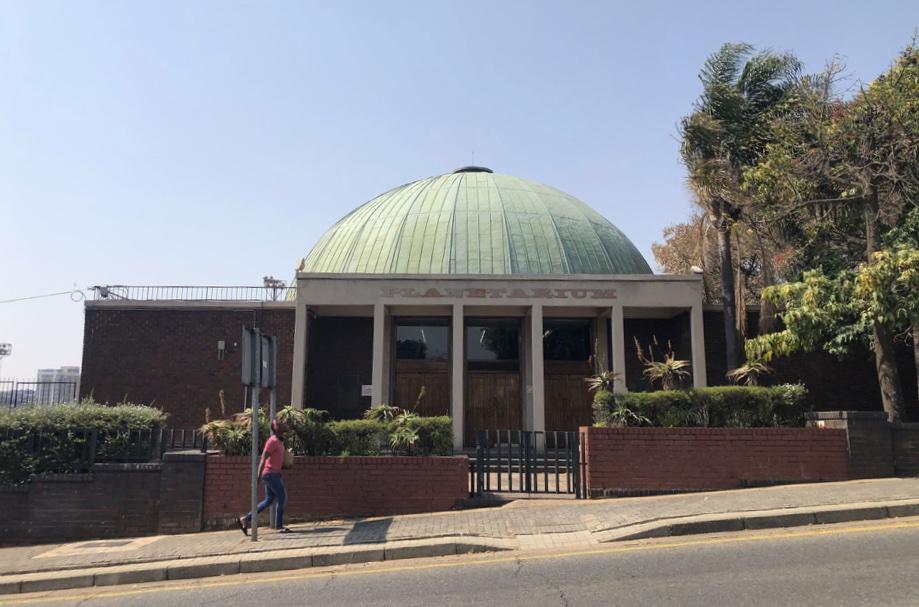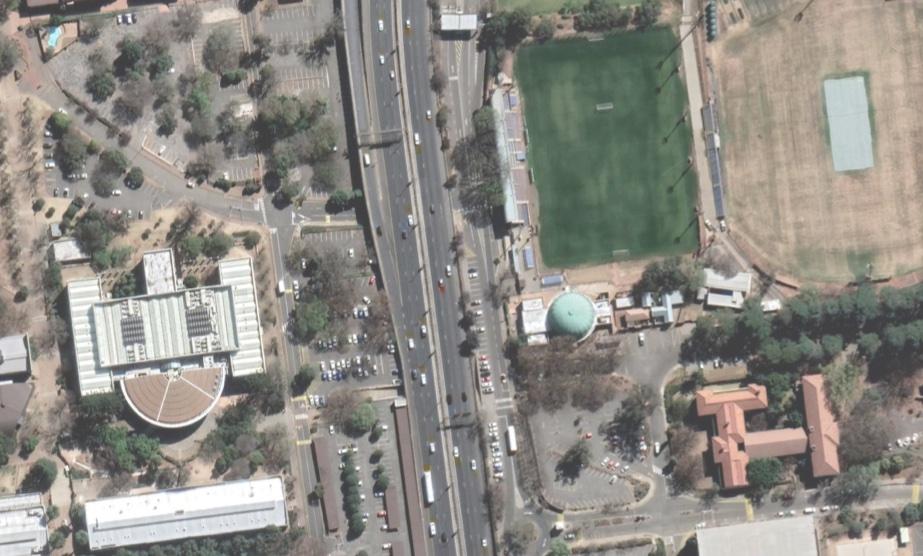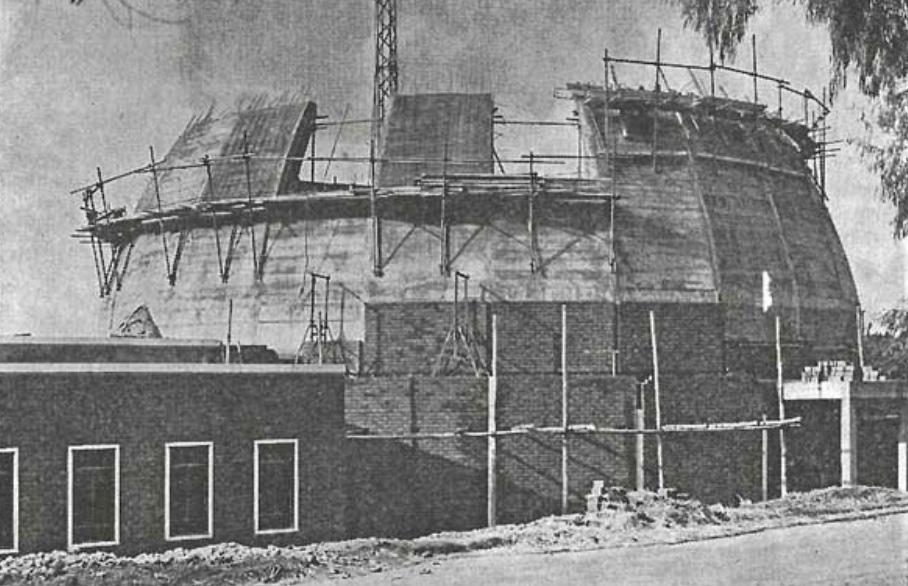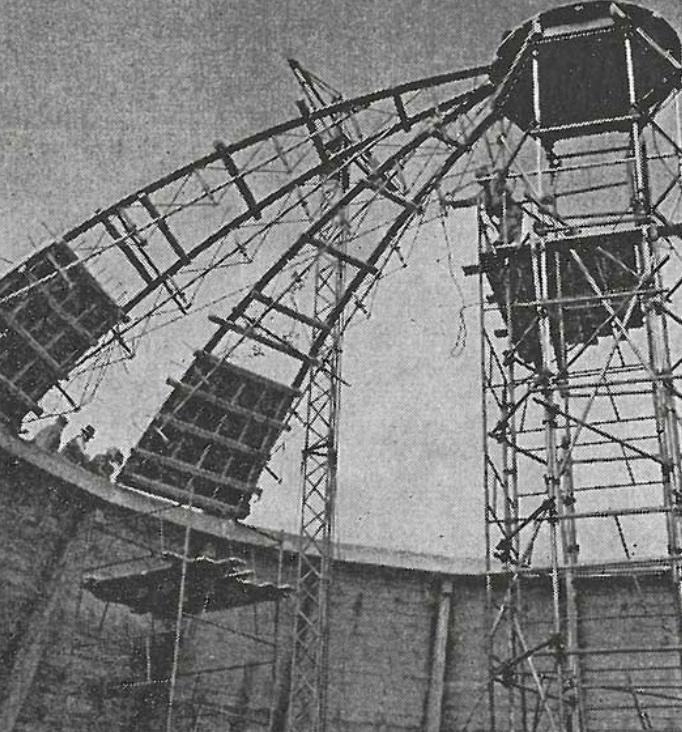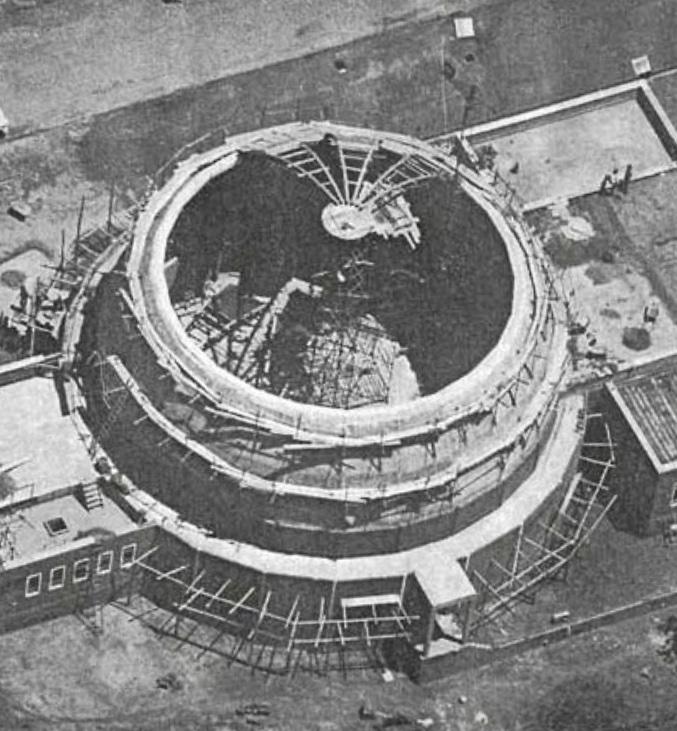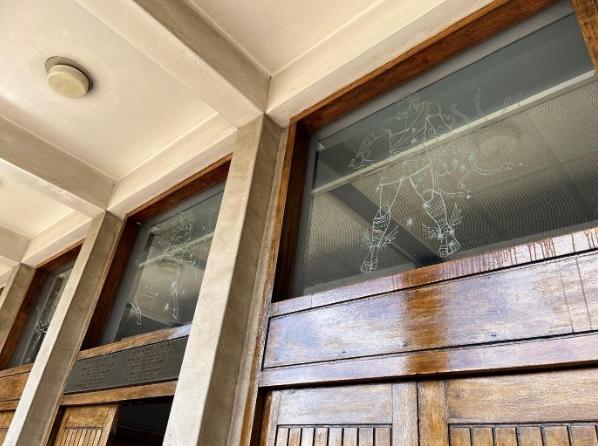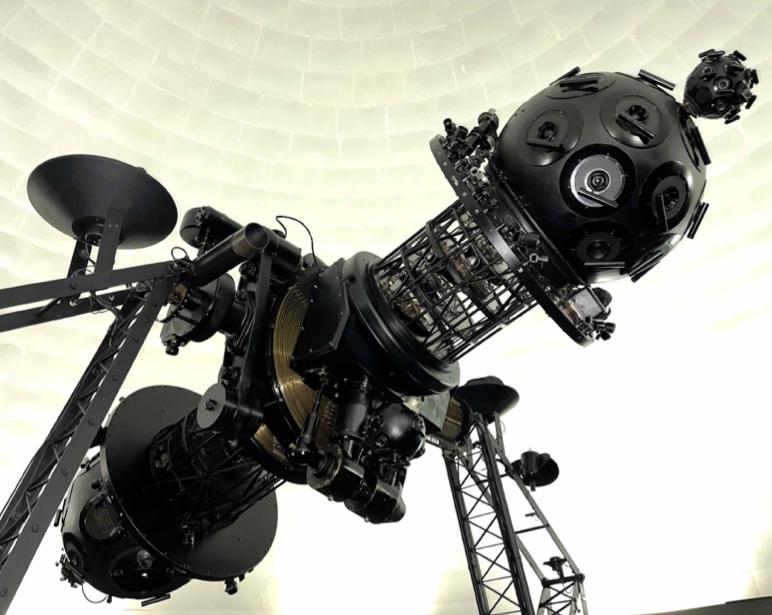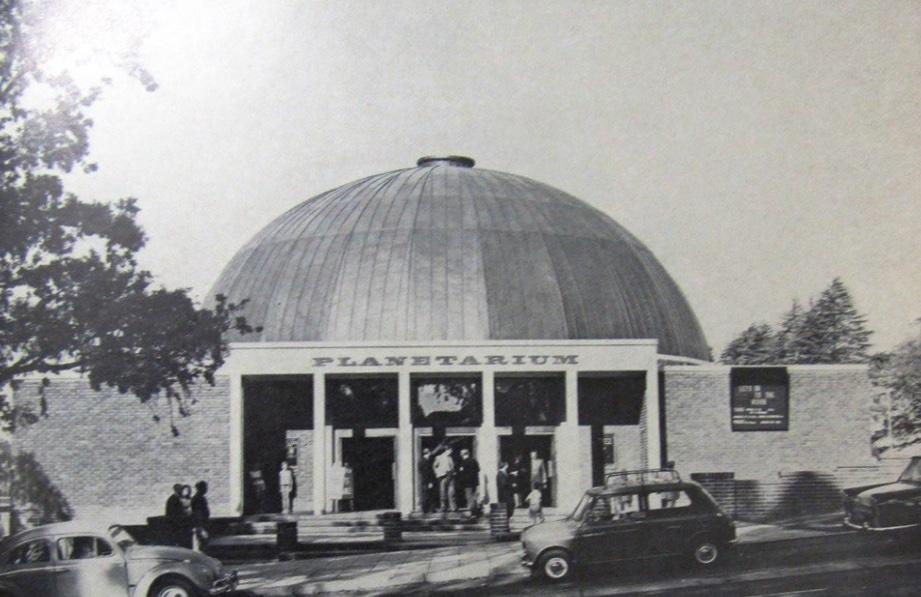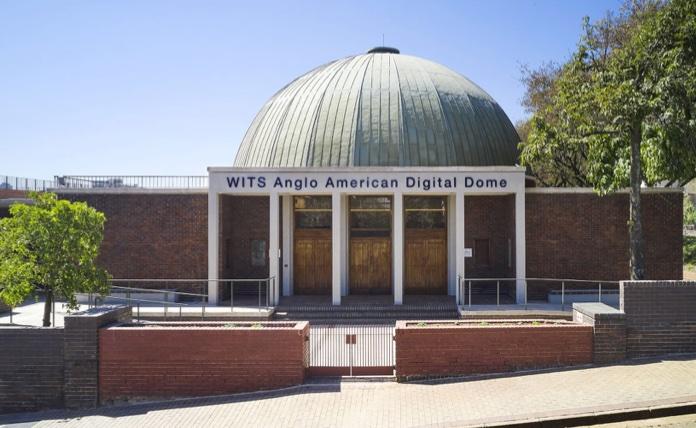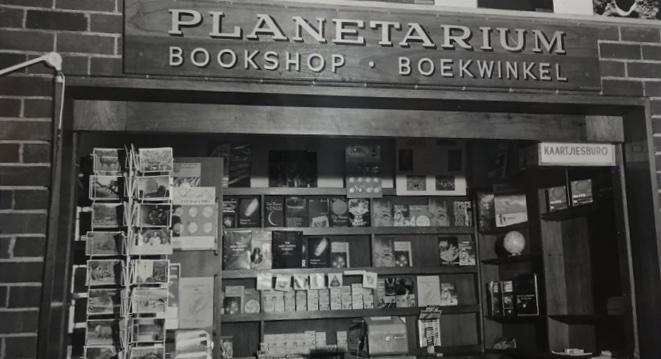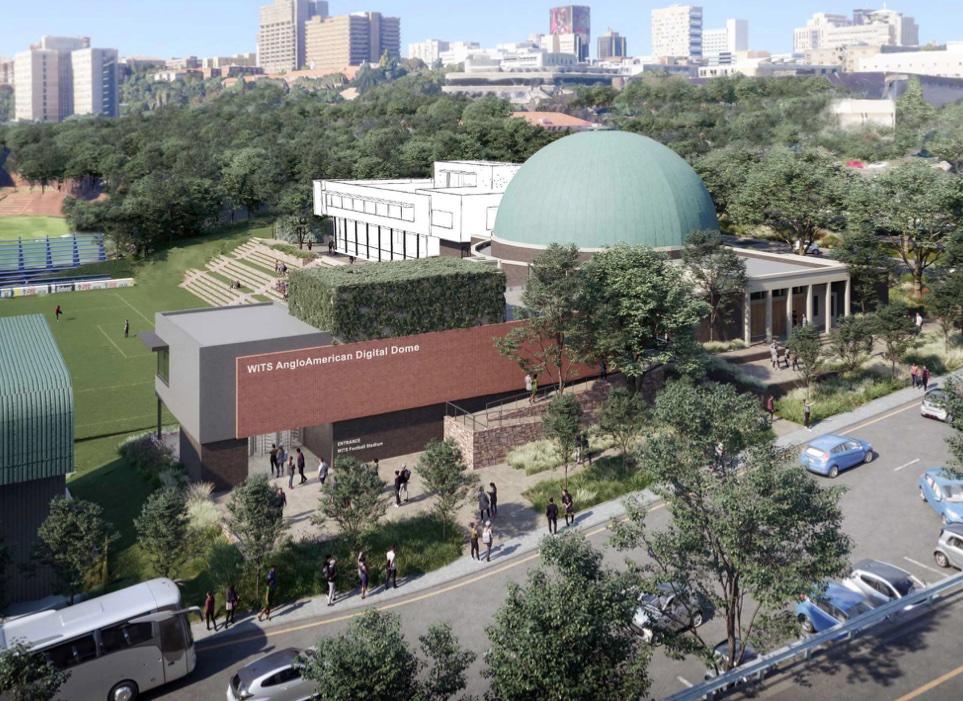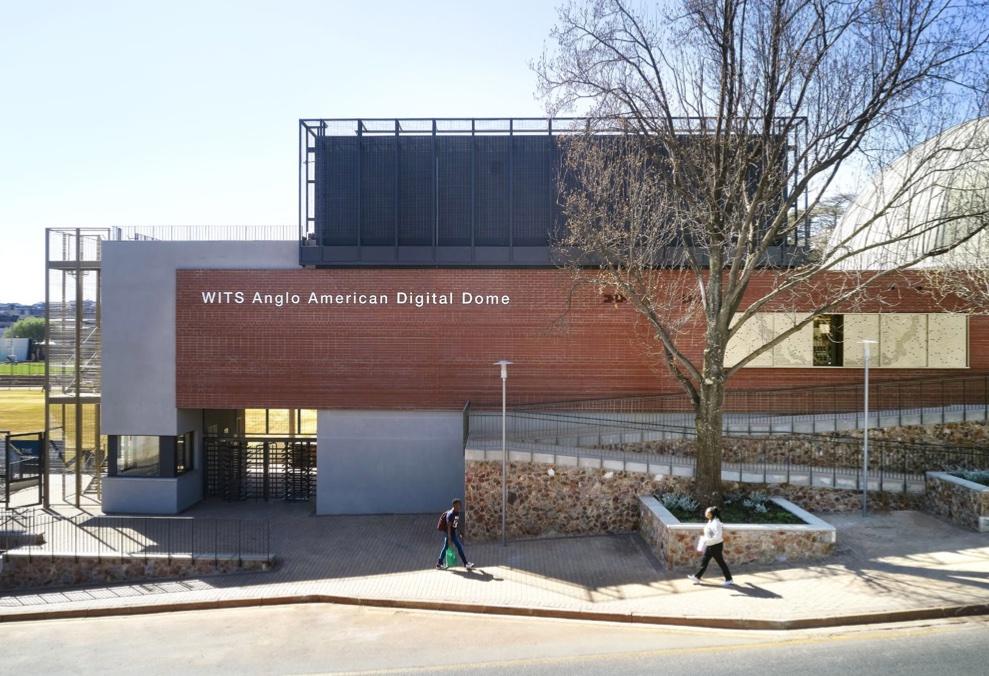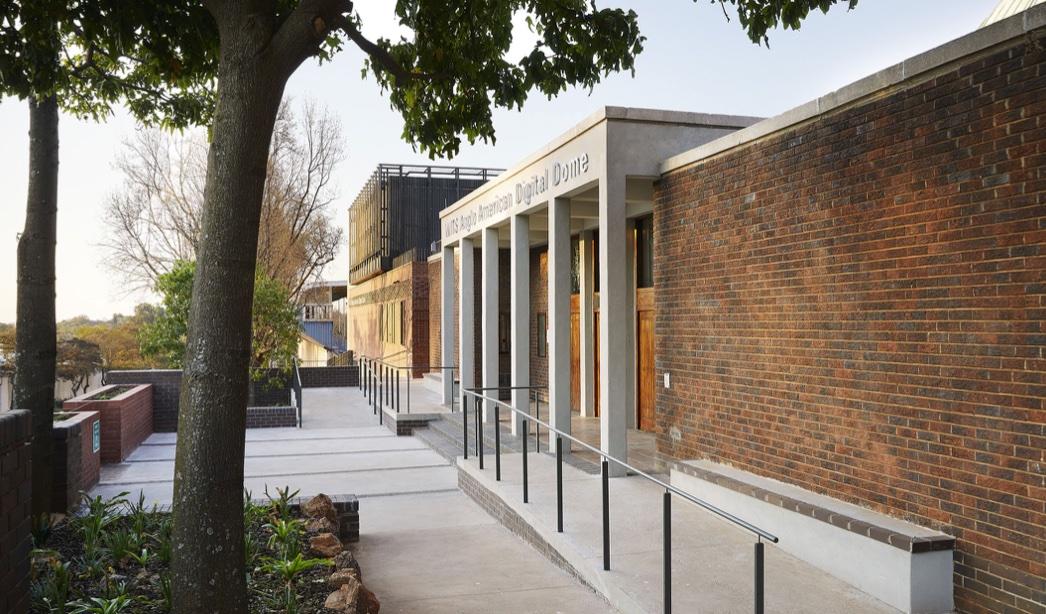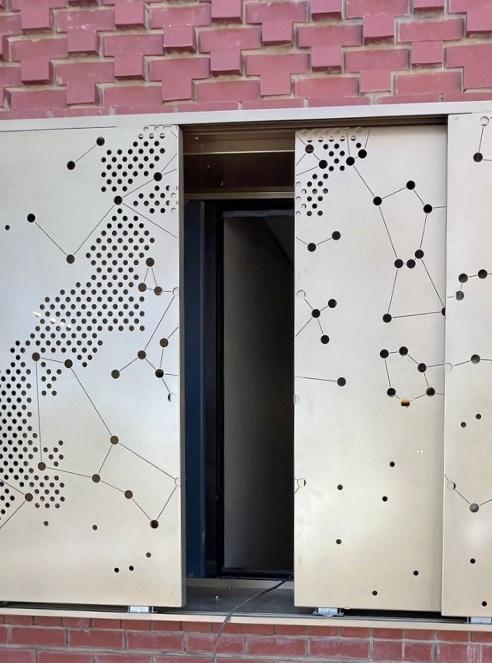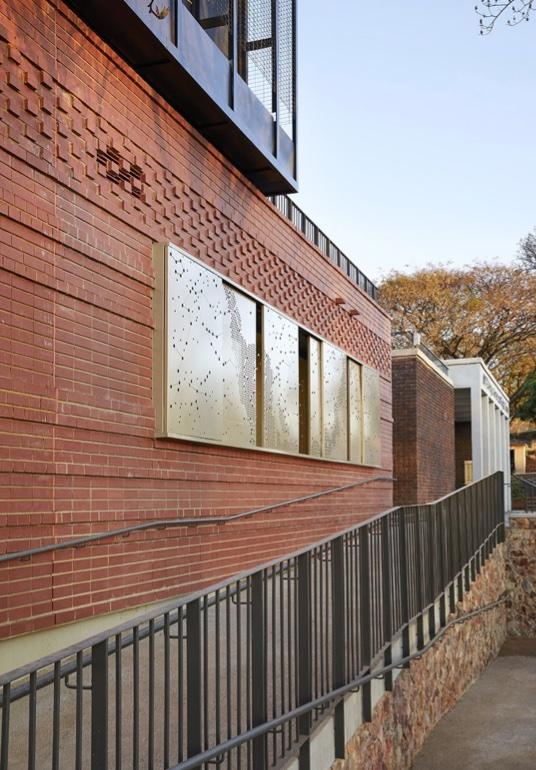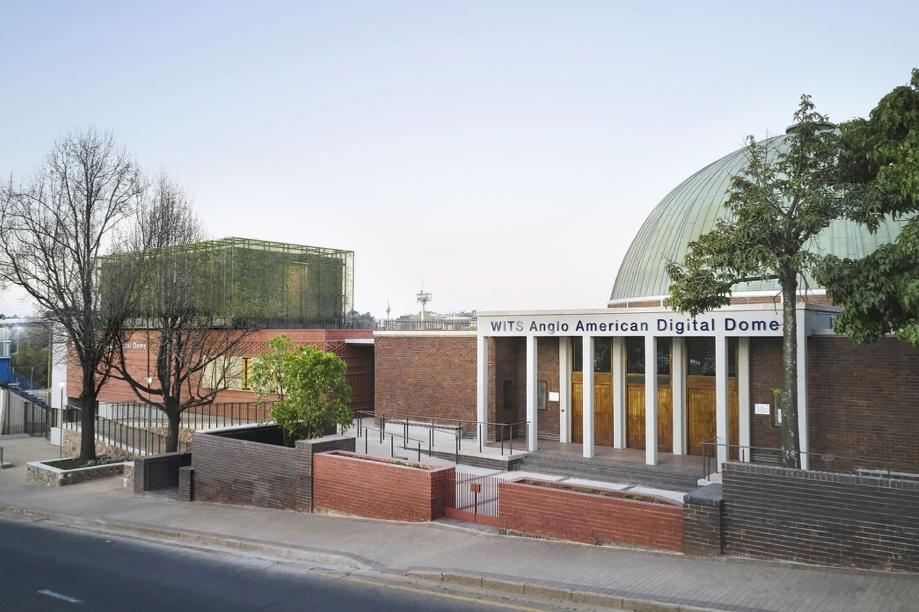
Disclaimer: Any views expressed by individuals and organisations are their own and do not in any way represent the views of The Heritage Portal. If you find any mistakes or historical inaccuracies, please contact the editor.
The copper domed Wits Planetarium with its slender columned portico is a recognisable and well-known landmark on Yale Road on the East Campus of the University of the Witwatersrand. The Planetarium was completed in 1960 and was notable for its extraordinary Zeiss planetarium projector.
For over 60 years, the Planetarium, the largest in sub-Saharan Africa, has had a significant impact on the University and the broader community, with many thousands of visitors having experienced the projected celestial wonders. A high-profile Centenary project for Wits was to transform the Planetarium, into a fully interactive digital system.
The newly named Wits Anglo American Digital Dome project aims to create a visualization laboratory within this iconic landmark. This will broaden its role well beyond astronomy, re-imagine its potential on a 21st Century campus, and enable unparalleled community engagement.
Kate Otten Architects (KOA) were appointed by the University of the Witwatersrand in 2021 as the architects for the adaptive re-use of the Planetarium. Noting the heritage importance and sensitivity of this building KOA appointed William Martinson as their specialist Heritage Architect.
A landmark on Yale Road
History
The Festival Committee instituted to organise the celebrations in 1956 of the Seventieth anniversary of the founding of Johannesburg decided it would be fitting to mark the occasion by raising the funds needed to buy and house a Zeiss Planetarium projector. It was however soon found that it would not be possible to obtain a new projector within a period of less than a year and it was decided to try and buy an existing one. With the assistance of Carl Zeiss in Germany, the Festival Committee succeeded in persuading the City Council of Hamburg to sell the projector which had been in use in that city since 1930, on condition that the projector would be fully modernised in the Zeiss factory.
The Hamburg projector was duly dismantled and moved to the Zeiss factory at Oberkochen for a complete overhaul. It was completely rebuilt with additional apparatus and improvements developed since its original construction - The result was a Zeiss Mk III Projector.
The responsibilities of the Festival Committee had in the meantime been taken over by the Johannesburg City Council who decided to sell the projector to the University of the Witwatersrand for use in the formal instruction of students and as a public amenity for the citizens of Johannesburg.
The architects R Spencer Parker, Anthony W. Parker and E N Finsen were duly appointed in 1958 for the Planetarium project. Evyind Niels Finsen was the project architect. Mr. C. A. Rigby was the consulting structural engineer. Once the architectural and structural documentation was complete, the contractor Desmond Davis was appointed, and building commenced in 1959.
A concrete dome approximately 22m in diameter, rests on a ring beam which is supported 5.5 m above floor level by the reinforced concrete wall on a structural concrete framework. The dome was constructed in two stages, the first of which was ribbed and terminated in an intermediate ring beam and the second was the final hemispherical ‘cap’. In order to simplify construction, the dome was divided into 24 equal segments.
Planetarium under construction
The outer dome is covered with sheet copper - with welted seams - fixed to dovetailed wooden battens screeded into the concrete. The inner structure, the sheet aluminium projection screen, is fixed to a geodesic domed framework. There is sufficient space between the two domes for a person to stand upright.
The geodesic framework was made and erected for Carl Zeiss by Messrs Dyckerhoff and Wickman, who bought with them a mobile bridge scaffold, mounted on wheels which ran on a circular track on the floor of the auditorium. From appropriate platforms on this rotating scaffold, access to any portion of the geodesic dome was readily possible.
The triangulated geodesic framework consists of several thousand flat steel bars interconnected by means of steel bolts. The lengths of the bars vary to give a perfect hemisphere on completion.
The erection of the complete geodesic framework and the fixing of the screen took two and a half months. To eliminate a ‘whispering gallery’ effect within the Planetarium, the aluminium sheets were perforated with approximately 30 million holes. In addition, a double layer of fibre glass wool insulation was wrapped round the outer surface of the framework. After the screen had been completed it was found that the disconcerting echoes, which were experienced from the outer concrete dome, had been entirely eliminated.
Entrance forecourt and loggia
The site of Planetarium is on the east side of Yale road - a few hundred metres to the north of the historic Yale Telescope building. Planning of the Planetarium was along an east-west axis with the dome placed centrally between the two rectangular annexes on the east and west sides. Externally the massing of the building comprises the large copper clad dome on a circular blue face-brick base bookended by two rectangular flat roofed pavilions.
Pedestrian entrance into the building from Yale Road was through a rectangular formal garden space defined by low perimeter walls, up a broad flight of steps through a symmetrical modernist hexastyle portico and then through a triple set of timber entrance doors into the large entrance foyer.
Each of the three timber doors was provided with a large clear glazed fanlight with decorative etched impressions of the Ophiuchus, Sagittarius and Perseus constellations.
Decorative etched impressions above the timber doors
The foyer was flanked on the north side by the Planetarium’s administrative offices, a kitchenette, a small ticket office and a strong room. The male and female toilet facilities occupied the matching area on the south side. The seating in the planetarium was subdivided into six equal sectors with axial walkways between the banks of seating leading from each of the six double doors and terminating at a central oval island on which the projector stood. The dome was in turn flanked on the east side by a smaller scaled services wing.
Planetarium Projector
At the outset it was hoped that the planetarium would be ready for use during the Union of South Africa Jubilee Festival in May 1960. This was however not realized mainly due to the fact that the erection teams allocated by Messrs Carl Zeiss could not, due to commitments in other parts of the world, arrive in Johannesburg before the beginning of December 1959.
On completion of the building envelope the projector was installed and adjusted by a team of Zeiss technicians. On 12 October 1960 the first full-sized planetarium in Africa, and the second in the Southern Hemisphere, opened its doors to the public. The building has for the past 60 years served its function for a wide audience.
Zeiss MkIII planetarium projector manufactured by Carl Zeiss of Germany
Adaptive re-use, alteration and additions
The brief was not only to transform the Planetarium into a cutting-edge digital facility, but also to provide for upgraded office spaces and teaching facilities. In addition, part of the brief was to add ablution facilities, a new access and upgrade the seating of the sports field and grandstands to the north of the Planetarium – the two facilities have long shared their position on campus. The different parts of the buildings were also to function as one or as separate, secure facilities in themselves. Some parts of the complex are also shared – like the viewing deck on the roof that is both a place to see the night sky through telescopes and an area for VIP guests to watch a match.
By all accounts a complex brief with an important heritage building to consider at the same time.
There are two main components to the project namely:
- The adaptive re-use and restoration of the existing Planetarium building
- The north wing extension
Adaptive re-use and restoration of the existing planetarium building
To start, all sensitive and valuable heritage elements were protected or removed off site and re-installed later. This included the etched windows above the entrance doors, the entrance doors and handles, plaques, signage, ticket office window, marble skirtings, etc. A series of careful alterations to the internal spaces followed which included the removal of the current office spaces and kitchenette, to create a larger and grander foyer area. The existing ablutions were demolished internally and reconfigured for better functionality with and increased fixtures to meet current regulation requirements.
The main entrance then and now
To the foyer we added a long seat, open plan kitchen area for events, and converted the original book store into a ticket office, using timber that we re-claimed and stored from the lab benches of the Gatehouse building – matching the Planetarium timber exactly.
The old bookshop
The circular passage around the dome or ambulatory was cleared of all dry walling and storage rooms, and restored to the original intended continuous space, with two additional fire escape doors added to the northeast and southeast sections of the corridor to comply with current fire regulation.
The internal Planetarium domed aluminium projection screen has remained untouched with new projectors and equipment needed for the Digital Dome upgrade installed without affecting the existing screen or dome covering. The existing seating was removed and given to a school for re-purposing. This made way for a new raked seating arrangement required for the new Digital projections.
The historic Zeiss projector was carefully disassembled and packed and is currently being stored by the university with the intention of having the projector re-assembled in a new location on campus as a display/museum piece.
The original services and plant rooms located to the east of the building which were too small for the new equipment, have been extended to the east by an additional 3.5m in an unobtrusive manner with minimal impact on the main building.
The external facades and finishes of the existing building have been cleaned and repaired where necessary including colour matching the Marmoran finish – cracked and/or collapsing areas were rebuilt, repaired and coated in matching Marmoran.
The later addition of un-matching, stepped brickwork around the entrance courtyard was removed and the wall, entrance gate and planting re-done to include access ramps and seating. The additions maintain the symmetry about the central axis of the Planetarium and materials have been re-used or matched.
North wing extension
The addition to the north of the existing Planetarium building is a 3-storey building, care has been taken to ensure that all views of the dome from surrounding vantage points remain unobstructed, especially from Yale Road but also from the M2 highway.
Artist's impression of the north extension
The setting out of both the height and plan lines of the new building, is taken from the original Planetarium building. The two structures are also separated a glazed entrance space, accessed by a ramp from the bottom of Yale road or from the original stairs from Yale road which have been extended in the same black brick.
The new and existing buildings, while working comfortably together, are legible as two distinct elements. The external facades of the new building are finished in terracotta- coloured patterned brickwork and the same Marmoran finish as the Planetarium, distinguishing it from the existing whilst referencing the masonry and other finishes of the existing building.
North wing extension
Old meets new
The lift and storerooms at roof level of the extension are covered in a steel mesh over which creepers are intended to grow thus referencing the bluey-green of the copper dome but not mimicking it. Another reference to the original building can be found in the sliding sun-screens which are patterned with the constellations of the night sky above the university, much like the etchings in the glass above the entrance doors.
Sliding sun-screens
We believe that all people who visit the Digital Dome should be able to access the building equally and via the front door. We have therefore added ramps from the lower level of Yale road and other parts of Wits campus to ensure this is possible. The safety of children who are a large group of the visitors, has also been carefully considered.
Accessibility is a high priority
This article was produced from the architects' submission for the 2024 Herbert Prins Colosseum Awards and the text from the heritage application made to PHRAG of which William Martinson is the author.
The project won the 2024 Herbert Prins Colosseum Award.
Comments will load below. If for any reason none appear click here for some troubleshooting tips. If you would like to post a comment and need instructions click here.

